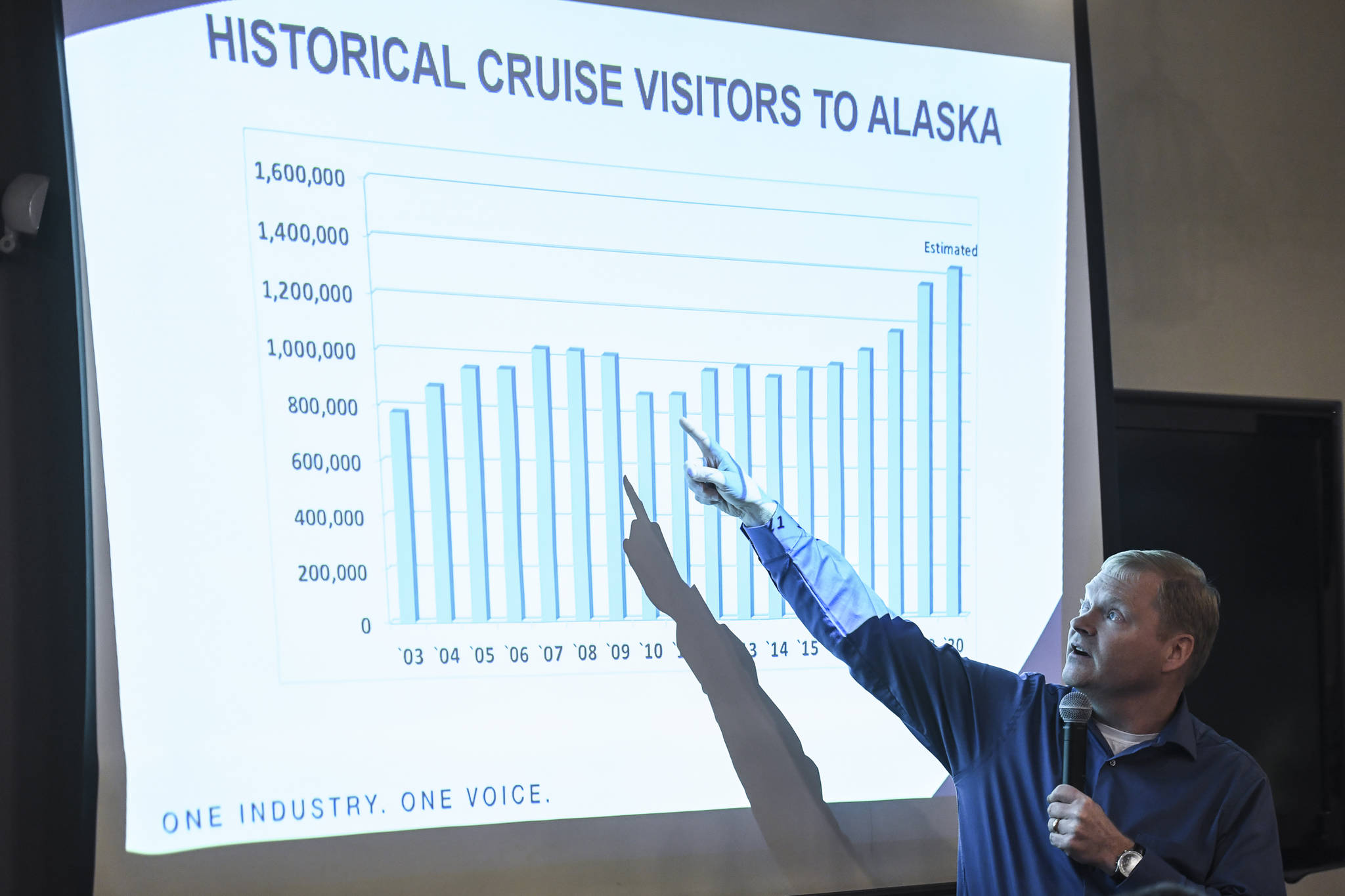Cruise ships are definitely getting bigger, but Juneau has the ability to manage all those visitors, and there’s a physical limit to how many people can actually come to the city.
That was the message from a panel of tourism industry representatives at the Juneau Chamber of Commerce Luncheon on Thursday.
John McConnochie of Cycle Alaska, Drew Green of Cruise Line Agencies of Alaska (CLAA) and Mike Tibbles of the Cruise Lines International Association (CLIA) sat before a packed crowd at the Moose Family Lodge to talk about Juneau’s cruise ship infrastructure and capacity.
The presentation began with a slide showing a number of quotes from locals making negative statements about the growth of the industry and the number of tourists coming ashore.
One of the quotes came from Paula Terrel, who sits on the city’s recently formed Visitor Industry Task Force.
“The ships are getting bigger, we’re getting more. If we don’t do something, it’ll just grow and grow,” Terrel said at the task force’s last meeting on Dec. 3. “There’s nothing to stop the cruise ship companies from coming with any volume they want.”
Statements like that need to be put in context, according to Lorene Palmer, chamber board member who was serving as moderator for the panel.
“Numbers, as you know, can be used in different ways to get to whatever point you want to get across,” Palmer told the Empire. “It was not our intent to drive a stake in the ground of what we should do next but to address things that people say, and sometimes those are coming out of feeling and not necessarily out of knowledge.”
There is a physical threshold of capacity in Juneau, according to Green and the city’s docks are currently at capacity.
Part of Green’s job is coordination of cruise ship voyages between the various companies and making sure their schedules don’t overlap with each other. CLAA asks for cruise ship itineraries from companies two years in advance and then cross references them with infrastructure at respective ports of call.
The next step of his job is what he calls “deconflicting” cruise ship schedules so ships have a place to dock once they arrive.
“With the new city owned cruise ship berths, we’re able to accommodate most ships that want to come here,” Green said.
It was possible, though not preferable, to increase daily capacity by what’s called “hot-berthing,” when one ship leaves and its space at the dock is immediately taken up by another ship. Ships split the dock fee between them but only get a half day in town, which can make it harder from companies to market a voyage.
The panel sounded a cautionary tone about limiting the number of cruise ship passengers or any other regulations that might deter cruise ships from landing in Juneau.
As more ships came to Juneau, ships began making stops at other, smaller ports, Tibbles said. That “(led) to a lot of economic opportunity in those communities,” he said.
Putting limits on Juneau’s cruise ship industry might affect those other communities, Tibbles said, which is something the community should consider when marketing Juneau as a destination.
During the question and answer session, one member of the audience asked what kind of threats could drive down the number of tourists and thus the city’s revenue from sales tax.
“There are regulatory changes that could potentially happen,” Tibbles said. The city has a strong partnership with the industry and the state has expressed an interest in promoting infrastructure, he said. “Overall things are good, but there’s always threats, if you had some regulatory or extreme tax, that could affect things.”

